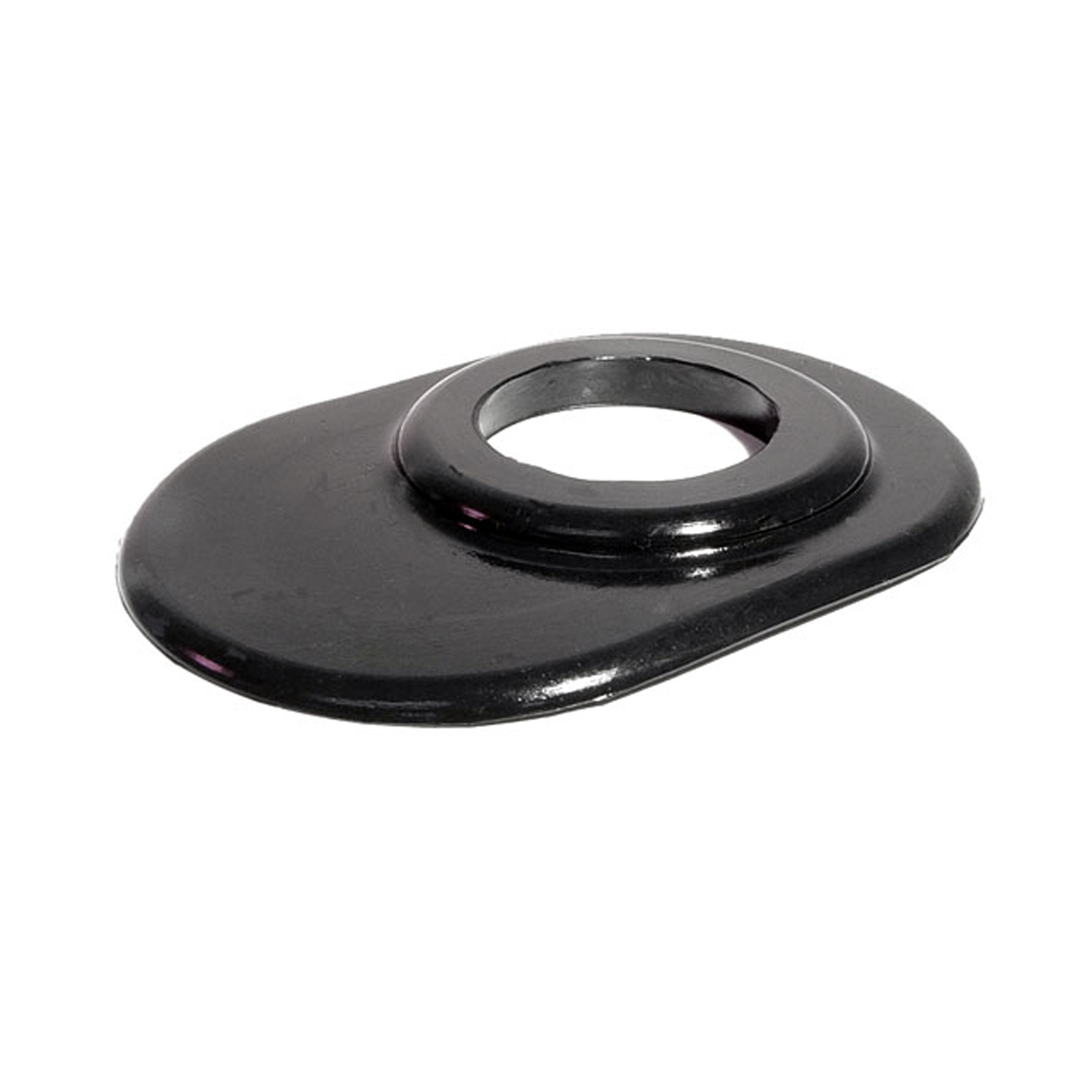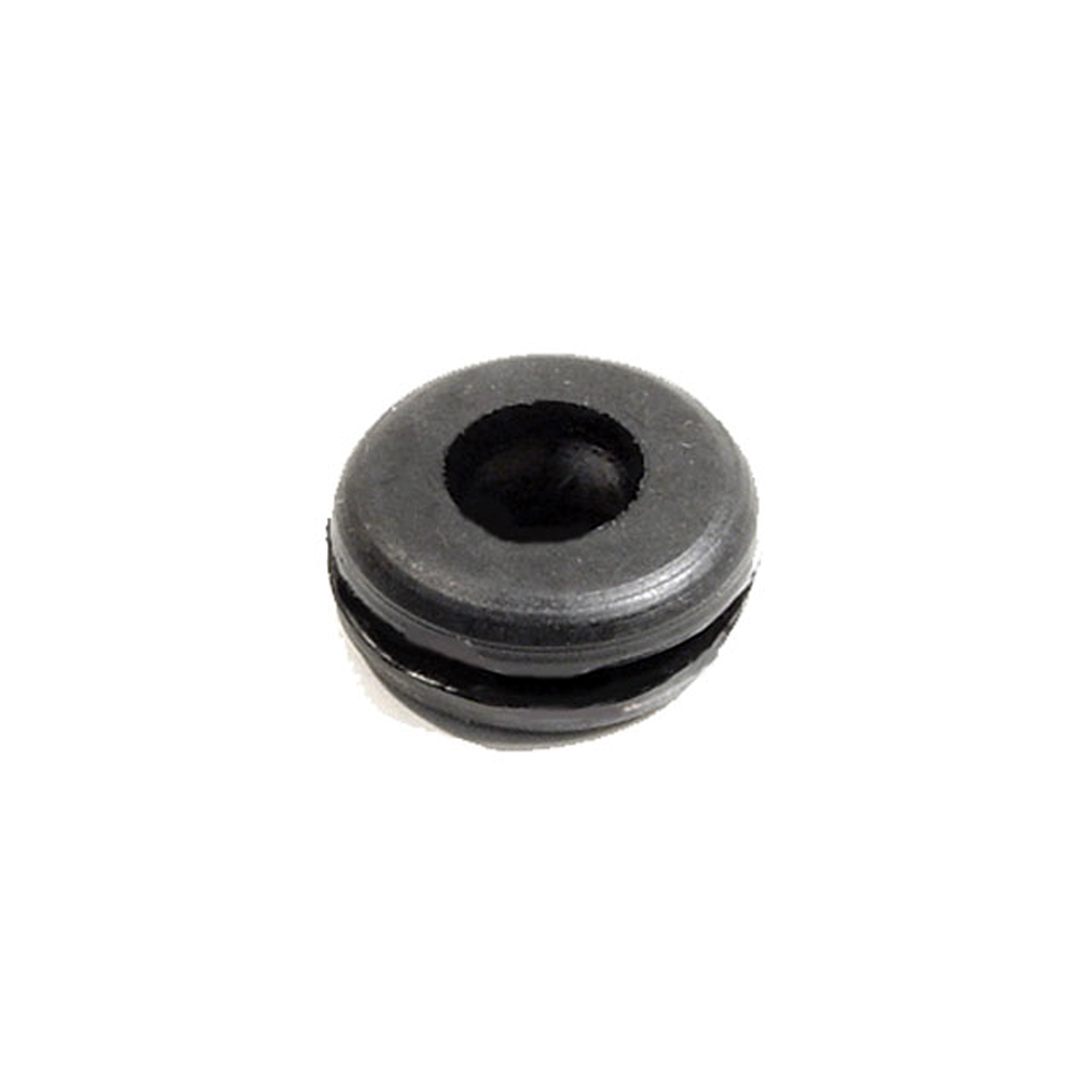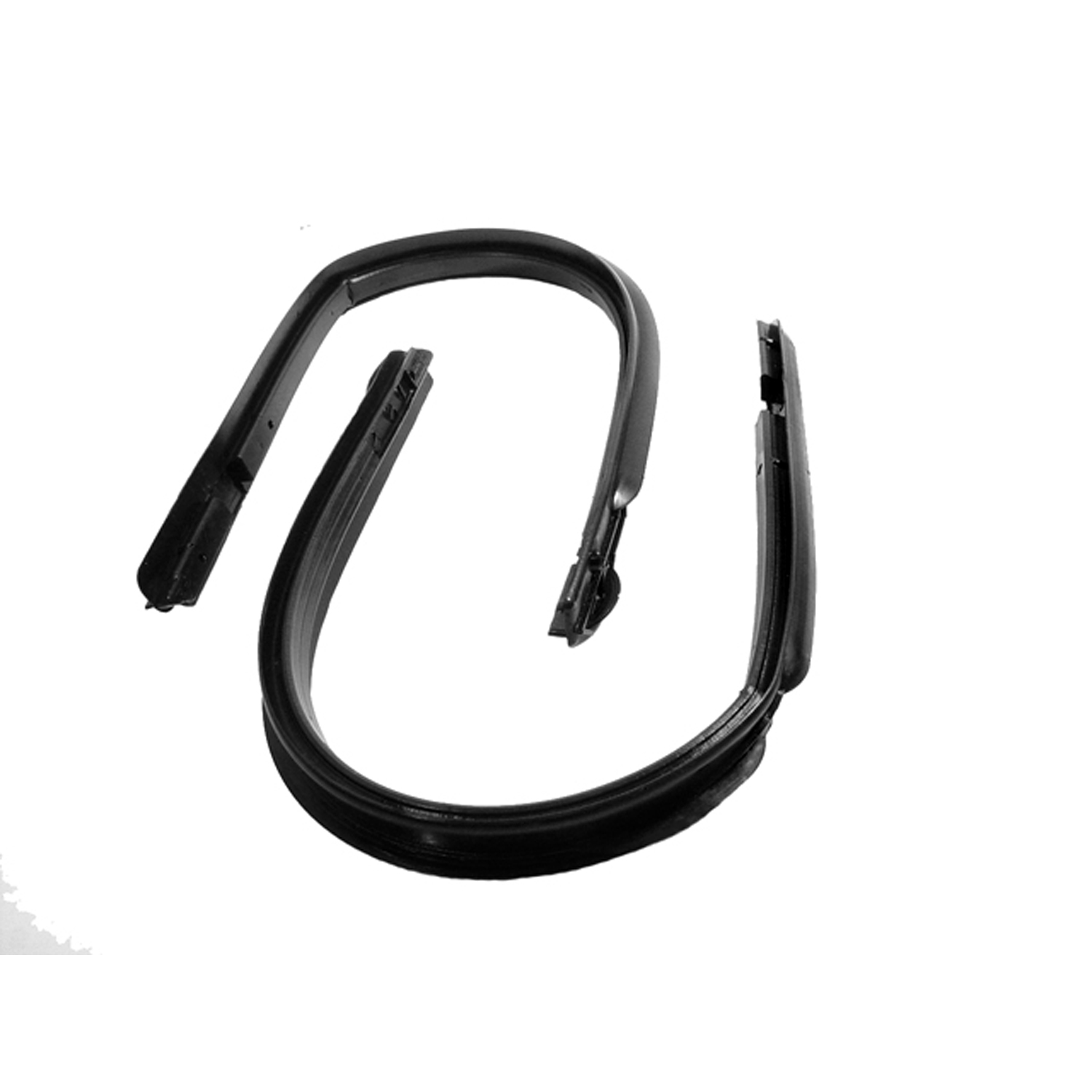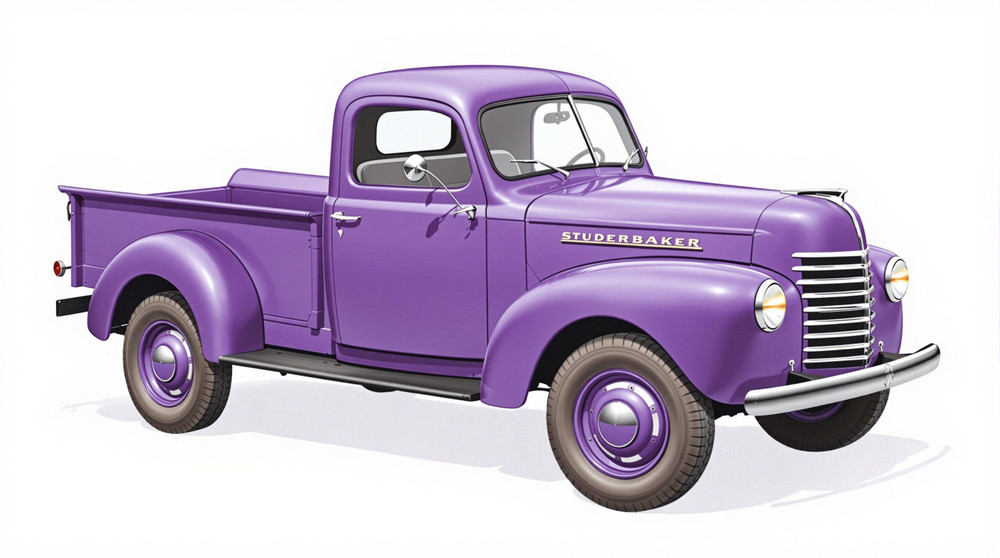Image of 1942 Studebaker M17, Note: These illustrations use artistic license and may differ from actual historical models.
Performance Metrics
Fundamental Metrics
Emotional Appeal
MMP Rating
| Engine Specifications | |
|---|---|
| Engine: | Hercules JXD 6-cylinder |
| Displacement: | 4.6L |
| Horsepower: | 86 hp |
| Torque: | Not available |
| Compression Ratio: | Not available |
| Ignition System: | Standard for the period (likely a distributor and points system) |
| Cooling System: | Liquid-cooled |
| Performance Specifications | |
| 0-60 Time: | Not available |
| 1/4 Mile Time: | Not available |
| Top Speed: | 45 mph |
| Transmission and Drive | |
| Drive Type: | 4x2 (rear-wheel drive) |
| Transmission Type: | 4-speed manual |
| Fuel and Efficiency | |
| Fuel System Type: | Carburetor |
| MPG: | Not available |
| Dimensions and Brakes | |
| Brakes: | Hydraulic with vacuum assist |
| Wheelbase: | 157 inches |
| Weight: | 7,800 lbs |
Note: Specifications for classic cars are given to the best of our ability, considering the limited and variant data available.
The Studebaker M17: A Testament to Ingenuity in Wartime
The year is 1942, and the world is in the throes of conflict. Amidst this backdrop, the Studebaker M17 emerges not just as a vehicle but as a symbol of American resilience and innovation. Born from the storied Studebaker Corporation, a company with roots reaching back to the days of horse-drawn wagons, the M17 is a product of necessity, crafted for the rigors of military service during World War II. Its creation underscores a pivotal moment when automotive manufacturers pivoted to support the war effort. A unique fact that sets the M17 apart is its dual role; it served both as a workhorse on the home front and in various theaters of war, showcasing its versatility and reliability.
Design and Innovation
With its robust exterior, the 1942 Studebaker M17 was designed to endure the harshest conditions. The truck's utilitarian aesthetics were underscored by its no-nonsense, flat-fronted grille and sturdy bodywork. Inside, the M17 was sparse yet functional, with materials chosen for durability over luxury. Technologically, it featured advancements crucial for wartime logistics, including four-wheel drive capabilities and a powerful engine suited for heavy loads and challenging terrain. The color options were limited, often dictated by military specifications, with olive drab being a popular choice. Among the body styles available, the cargo truck variant was iconic, widely recognized for its canvas-covered cargo area and bench seats for transporting troops.
Historical Significance
The Studebaker M17's contribution to automotive design may not be flashy, but it was profound. It set new standards for vehicle robustness and versatility, influencing post-war truck designs. Its ability to perform under pressure without faltering made it indispensable during the war and cemented its reputation long after peace was declared. The M17's lasting influence can be seen in the emphasis on reliability and functionality in subsequent commercial truck designs.
Performance and Handling
Performance-wise, the Studebaker M17 was more about muscle than speed. Its top speed and acceleration were modest by today's standards but were more than adequate for wartime needs. Handling-wise, the M17 could traverse rugged landscapes with relative ease, absorbing bumps and navigating difficult conditions without compromising stability. Drivers often praised the truck for its reliable engine performance and the sense of control it provided, even when fully loaded or navigating treacherous roads.
Ownership Experience
Originally purposed for military use, the Studebaker M17 found its way into civilian life post-war, serving as a daily driver, farm vehicle, and even a show car for enthusiasts of military memorabilia. Maintenance was straightforward due to its simple design and mechanicals, making it relatively easy for owners to keep it running. However, parts scarcity in modern times can pose challenges.
Fun Facts
The Studebaker M17 has its share of interesting trivia. For instance, some were converted into fire trucks and service vehicles after the war. While not known for breaking speed records, the M17 held its own in endurance and reliability tests. Criticisms were few but often centered on its basic comfort features—or lack thereof—when compared to civilian vehicles.
Collector's Information
Today, the Studebaker M17 is a rare gem for collectors. With production numbers focused on wartime quotas rather than commercial sales figures, estimating exact numbers is challenging; however, it's believed that several thousand were made. As for value, well-preserved examples can fetch a wide range depending on provenance and condition—anywhere from $10,000 to $40,000 or more for pristine or historically significant specimens. The market trend appears to show an appreciation in value as these vehicles become scarcer and more desirable among collectors of military vehicles.
Conclusion
The 1942 Studebaker M17 is more than just a vintage truck; it's a rolling piece of history that embodies the spirit of an era defined by resilience and ingenuity. Its story is one of transformation—from civilian manufacturer to wartime contributor—and it serves as a reminder of how industry can adapt and thrive even in the face of adversity. For collectors and enthusiasts alike, the M17 isn't just a vehicle; it's a testament to American manufacturing prowess during one of history's most challenging periods.
1942 Studebaker M17 Catalog of Parts
 1942 Studebaker M17 Spring and Shackle Bushing. 7/8" bottom O.D-BN 15Spring and Shackle Bushing. 7/8" bottom O.D. X 1-1/8" high, with 1/2" I.D. Each
1942 Studebaker M17 Spring and Shackle Bushing. 7/8" bottom O.D-BN 15Spring and Shackle Bushing. 7/8" bottom O.D. X 1-1/8" high, with 1/2" I.D. Each 1942 Studebaker M17 Gas Filler Grommet. Perfect reproduction. Top 2-1/16" I.D-GF 45Gas Filler Grommet. Perfect reproduction. Top 2-1/16" I.D., 3-7/16" O.D. Each
1942 Studebaker M17 Gas Filler Grommet. Perfect reproduction. Top 2-1/16" I.D-GF 45Gas Filler Grommet. Perfect reproduction. Top 2-1/16" I.D., 3-7/16" O.D. Each 1942 Studebaker M17 Steering Column Grommet. For 4-speed models. Each-SC 24Steering Column Grommet. For 4-speed models. Each
1942 Studebaker M17 Steering Column Grommet. For 4-speed models. Each-SC 24Steering Column Grommet. For 4-speed models. Each 1942 Studebaker M17 Steering Column Grommet. For 3-speed models. Each-SC 24-ASteering Column Grommet. For 3-speed models. Each
1942 Studebaker M17 Steering Column Grommet. For 3-speed models. Each-SC 24-ASteering Column Grommet. For 3-speed models. Each 1942 Studebaker M17 Headlight & Tail-Light Wire Grommet. 3/8" I.D., 7/8" O.D-SM 13-AHeadlight & Tail-Light Wire Grommet. 3/8" I.D., 7/8" O.D. Each
1942 Studebaker M17 Headlight & Tail-Light Wire Grommet. 3/8" I.D., 7/8" O.D-SM 13-AHeadlight & Tail-Light Wire Grommet. 3/8" I.D., 7/8" O.D. Each 1942 Studebaker M17 Front Vent Window Seals. 28-7/8" long each. Pair R&L-WR 9401Front Vent Window Seals. 28-7/8" long each. Pair R&L
1942 Studebaker M17 Front Vent Window Seals. 28-7/8" long each. Pair R&L-WR 9401Front Vent Window Seals. 28-7/8" long each. Pair R&LWhy Choose Metro?
For over 100 years, Metro Moulded Parts has been the pinnacle of quality in classic car restoration parts. Our commitment to precision and authenticity in every component ensures a perfect fit and an OEM-level appearance.
- Expert Craftsmanship & Quality: Each part is a testament to our dedication to reliability and perfection, crafted from original designs and thoroughly tested.
- Advanced Technology: We use cutting-edge techniques to create flawless, long-lasting parts that surpass others in performance.
- SuperSoft Sponge – The Ultimate Door Seal: Not only are our door seals 30% softer than competitors', but they're also guaranteed to never leak. They effectively reduce wind and road noise, enhancing your classic car's comfort and driving experience.
- Proudly American: Our parts are a product of American craftsmanship, made in the USA with a spirit of excellence and heritage.
- Unrivaled Warranty: We back our products with a 30-year industry-leading warranty, a testament to our confidence in their quality.
Join us in preserving the legacy of classic cars with parts that are crafted for perfection, not just made.

